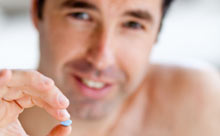Hemorrhagic Complications of Anticoagulant Treatment. part 22
Finally, the results of Global Utilization of Streptokinase and t-PA for Occluded Coronary Arteries IIa and the Thrombolysis in Myocardial Infarction (TIMI) 9A studies in patients with ischemic coronary syndromes indicated that a 20% increase in the IV heparin dose above the 1,000 U/h that was used in the Global Utilization of Streptokinase and t-PA for Occluded Coronary Arteries I study increased the risk of intracranial bleeding when combined with thrombolytic therapy.
3.1.2 Relationship between risk of bleeding and method of administering heparin
The evidence for a relationship between the risk of bleeding and the method of administering heparin comes from randomized trials in which UFH was either administered by continuous IV infusion with intermittent IV injection, continuous IV heparin with subcutaneous heparin, continuous IV heparin for approximately 10 days with a shorter course (4 to 5 days), continuous IV heparin and oral anticoagulants compared with oral anticoagulants alone, continuous IV heparin administered on a weight-adjusted basis with a standard clinical approach (5,000-U bolus, 1,000 U/h), and continuous IV heparin monitored using either the APTT or monitored using a heparin assay.
In summary, there was an increased rate of major bleeding with intermittent IV heparin compared with continuous IV infusion. Continuous IV heparin caused less bleeding than intermittent IV heparin; continuous IV heparin and subcutaneous heparin were associated with a similar amount of bleeding; and continuous IV heparin for approximately 10 days and 5 days caused a similar amount of bleeding.
3.1.3 Relationship between the risk of bleeding and patient risk factors
There is good evidence that comorbid conditions, particularly recent surgery or trauma, are very important risk factors for heparin-induced bleeding. This association was demonstrated in the study by Hull and associates in patients with proximal vein thrombosis. Patients without clinical risk factors for bleeding were treated with a starting dose of 40,000 U of heparin by continuous infusion, while those with well-recognized risk factors for bleeding (recent surgery, trauma) received a starting dose of 30,000 U. Bleeding occurred in 1 of 88 low-risk patients (1%) who received 40,000 U initially and 12 of 111 high-risk patients (11%) who received 30,000 U.
The concomitant use of aspirin was identified as a risk factor in early retrospective studies and corroborated by Sethi and associates. In their study in patients undergoing aortocoronary bypass surgery, the preoperative use of aspirin caused excessive operative bleeding in patients who receive very high doses of heparin as part of the routine for bypass procedures. Although the concomitant use of aspirin is associated with heparin-induced bleeding, this combination is used frequently in the initial treatment of acute coronary artery syndromes without serious bleeding.
